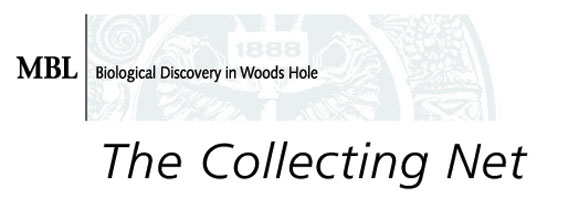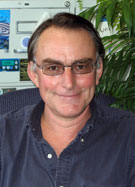| |

Spring 2009, Vol. 5, No. 1 | Back Issues
Back to index
Researcher Spotlight
Meet Peter J.S. Smith
Interim Director of the MBL Cellular Dynamics Program
Director, Biocurrents Research Center
 Peter J.S. Smith was recently named interim director of the MBL Cellular Dynamics Program (CDP), a merger of the former Architectural Dynamics in Living Cells Program and the Molecular Physiology Program. The CDP aims to accelerate knowledge of basic biology and disease through the development and utilization of tools customized to shed light on life’s most essential processes. Peter is also director of the BioCurrents Research Center (BRC), a national research resource funded by the National Institutes of Health. Peter J.S. Smith was recently named interim director of the MBL Cellular Dynamics Program (CDP), a merger of the former Architectural Dynamics in Living Cells Program and the Molecular Physiology Program. The CDP aims to accelerate knowledge of basic biology and disease through the development and utilization of tools customized to shed light on life’s most essential processes. Peter is also director of the BioCurrents Research Center (BRC), a national research resource funded by the National Institutes of Health.
As we start our interview, Peter is heaving around sections of a mammoth, 395-page grant proposal, slapping them down on his desk with loud thwack.
“I’m glad I finished writing this,” he interjects. “It’s very useful! Finally, I know what I am meant to do with my life!”
Peter is a pleasantly ironic fellow, but he’s not kidding when he says this giant proposal represents his life work. It is for renewal of the BioCurrents Research Center, which appears to be some kind of extended machine shop on the second floor of Lillie Laboratory. It is a machine shop, in a sense, but specializes in making sensors that can measure very, very, very small things, such as ions floating around the edges of cells. Peter holds up what looks like a sewing machine needle. “This is one of our earliest sensors,” he says. “You can’t see the tip—it’s too small—it’s 2 microns (about .00008 of an inch). We can measure oxygen, nitric oxide, phosphate, a whole bunch of stuff with these electrochemical sensors. This is what we do, and we are pretty good at it!”
Very good indeed—about 40 researchers a year from all over the world find their way to the MBL to collaborate with Smith, and take advantage of the BioCurrents Research Center’s instrumentation. That’s why Peter’s grant proposal is so hefty—it includes all of his collaborations—and writing it was very much “a team effort,” fortunately, or he might still be at it.
Peter, who was born in Scotland (his father was Scottish, his mother from Ohio) first came to the MBL as a visitor to Lionel Jaffe’s lab in 1989. At the time, he was studying cockroach neural regeneration at Cambridge University in the UK, but he became interested in the microsensors that Jaffe had pioneered in the late 1980s. Peter ended up moving here, changing his field of research and, in 1994, he took over Jaffe’s NIH Resource grant at the MBL.
Peter is excited about the potential medical applications of many of his current collaborations, including one called “bioelectrical signals and regeneration of complex organs and appendages.” He is also working with a group at Women & Infants Hospital in Providence on a sensor that will evaluate the state of ovarian cancer cells, and with another group at the same hospital on a sensor for testing the quality of human eggs prior to in vitro fertilization.
So, what does Peter enjoy doing in his spare time? He laughs at the question. “What do I do? Now, there’s where it gets tough! Let’s see. I do bird-watching, gardening, cooking. Cooking is like science without the waiting. You just throw all kinds of stuff into the pot and then you find out in an hour or two whether you got it right or not.”
He gazes around at his office, which is packed with stuff, from antique microscopes to pictures of his three children and grandson, to fine pen-and-ink drawings (one by Salvador Dali, he says). Just outside his door, a big telescope is trained on the seals lazing on the rocks in Vineyard Sound. Peter’s eyes land on the stack of paper on his deck. “What do I do?” he says. “I write grants!”
The Collecting Net is an employee newsletter published by the Communications Office. Comments and suggestions are welcome. Call (508) 289-7423 or e-mail us at

|